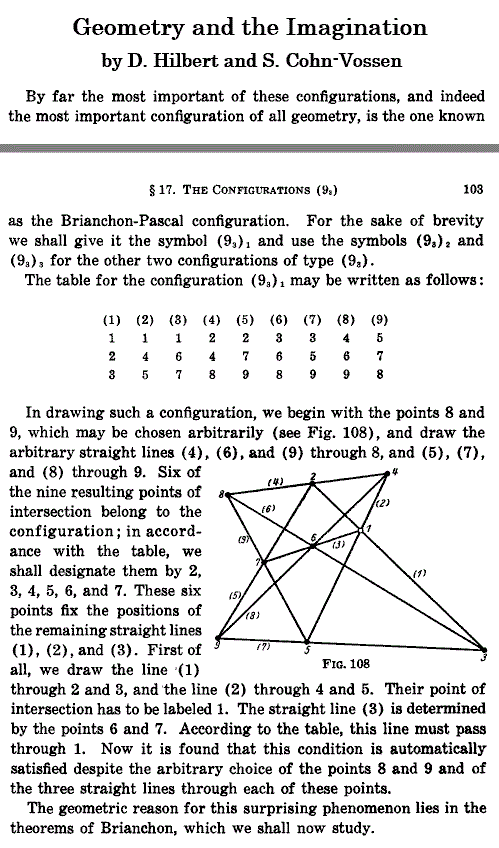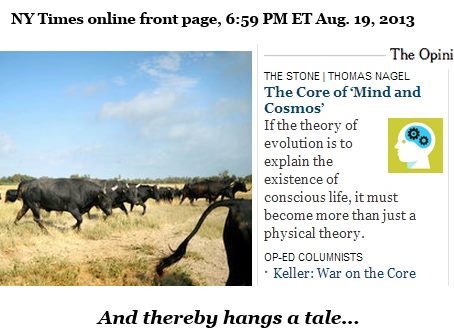Last midnight's post quoted poet John Hollander
on Cervantes—
"… the Don’s view of the world is correct at midnight,
and Sancho’s at noon."
The post concluded with a figure that might, if
rotated slightly, be regarded as a sort of Star of
David or Solomon's Seal. The figure's six vertices
may be viewed as an illustration of Pascal's
"mystic hexagram."

Pacal's hexagram is usually described
as a hexagon inscribed in a conic
(such as a circle). Clearly the hexagon
above may be so inscribed.
The figure suggests that last midnight's Don be
played by the nineteenth-century mathematician
James Joseph Sylvester. His 1854 remarks on
the nature of geometry describe a different approach
to the Pascal hexagram—
|
"… the celebrated theorem of Pascal known under the name of the Mystic Hexagram, which is, that if you take two straight lines in a plane, and draw at random other straight lines traversing in a zigzag fashion between them, from A in the first to B in the second, from B in the second to C in the first, from C in the first to D in the second, from D in the second to E in the first, from E in the first to F in the second and finally from F in the second back again to A the starting point in the first, so as to obtain ABCDEF a twisted hexagon, or sort of cat's-cradle figure and if you arrange the six lines so drawn symmetrically in three couples: viz. the 1st and 4th in one couple, the 2nd and 5th in a second couple, the 3rd and 6th in a third couple; then (no matter how the points ACE have been selected upon one of the given lines, and BDF upon the other) the three points through which these three couples of lines respectively pass, or to which they converge (as the case may be) will lie all in one and the same straight line."
|
For a Sancho view of Sylvester's "cat's cradle," see some twentieth-century
remarks on "the most important configuration of all geometry"—

"Now look, your grace," said Sancho,
"what you see over there aren't giants,
but windmills, and what seems to be arms
are just their sails, that go around in the wind
and turn the millstone."
"Obviously," replied Don Quijote,
"you don't know much about adventures.”
― Miguel de Cervantes Saavedra







